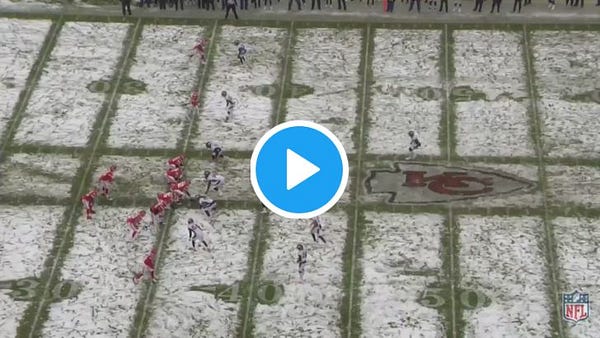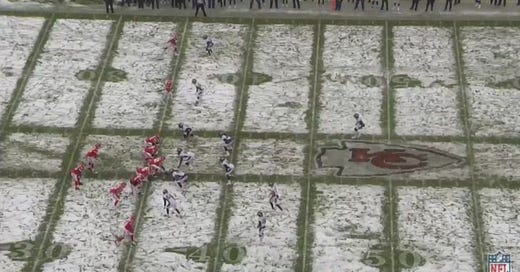Kansas City Chiefs’ outside zone RPO’s
Given that they ran close to 100 outside zone RPO’s over the last two seasons, and that every NFL team changes up the routes and formations of their main concepts in order to make things seem different to the defense, the Chiefs had many ways to run outside zone RPO’s. However, the concept behind most of these RPO’s was consistent. This breakdown will look at that core concept
Most teams use RPO’s to protect their base runs; the Chiefs use them as an extension of their pass game. This approach is better for pass-first teams, such as the Chiefs, as you will inevitably pass more. The Chiefs ran RPO’s a bit more in 2018 than they did in 2019, likely because of Mahomes’ familiarity with them as he used them a lot at Texas Tech. Something they started doing more in 2019 is give Mahomes more pre-snap reads, likely because they trusted his ability to process the defense more pre-snap than they did in 2018.


Steve Sarkisian, Alabama offensive coordinator, once said that the more options you give the quarterback on RPO’s the more likely he will be to pass the ball. This is exactly what the Chiefs do, as instead of the quarterback having one potential target, he has two. These two routes are always either two slants (lion), or slant-flat (dragon)- they sometimes changed things up when they ran it from trips but everything was essentially the same as the #3 receiver runs a flat route which pretty much cancels out a defender, so it’s kind of the same as if he was on the other side of the field.

This turns their outside zone RPO’s into a double read for Mahomes: the first is the hook (second defender inside CB); if he doesn’t move in the direction of the run Mahomes simply hands it off; if he moves in the direction of the run then the second read is unlocked.
On either dragon or lion, the read is always the apex defender (first defender inside the CB); if he plays either the inside slant or the flat, the quarterback throws the outside slant; if he sits in-between, the quarterback throws either the flat or the inside slant. So, their main idea is create a two-on-two on the apex and the CB, and as the CB is usually outside leverage, he usually struggles to defend the outside slant.
This method of running RPO’s essentially puts two defenders in conflict at once. The main downside of this is that the quarterback will usually hold onto the ball for slightly longer than a regular RPO. The Chiefs attempted to mitigate this by locking the backside tackle on the outside zone- having him pass protect rather than participate in the run blocking. This puts a decent bit of pressure on the tackle as he has to essentially defend both the C and B gaps as the guard has flowed with the run, but, from my tracking, this seemed to work out fine as Mahomes was rarely under duress. However, it’s still likely a good idea to avoid using the concept if pressure is expected on the backside of the run.
An advantage of holding the ball for longer is that the defense usually flowed more in the direction of the run, creating space for the Chiefs’ receivers to run after the catch. Mahomes’ accuracy also improved on RPO’s for some reason and he also displayed his ability to throw from awkward angles when he sometimes needed to. This resulted in the Chiefs having quite a lot of success on RPO’s, but it was less than it should have been as their receivers dropped a disproportionate amount of their targets.
They started to implement some new RPO’s late in the 2019 season, so I would expect to see some new ways to run them in 2020.


